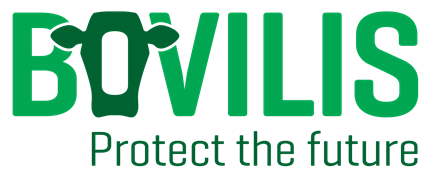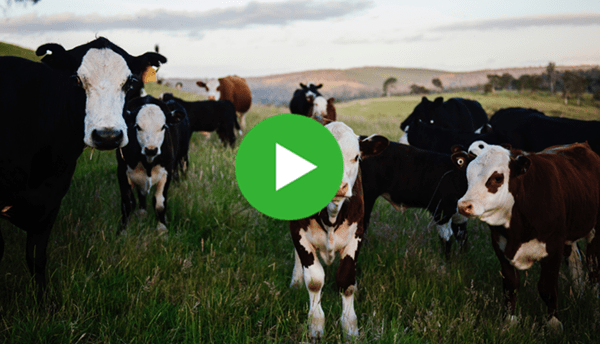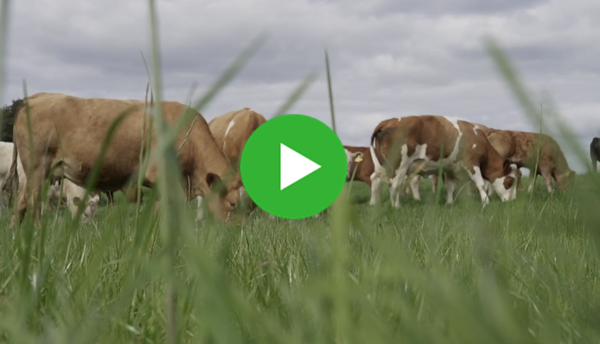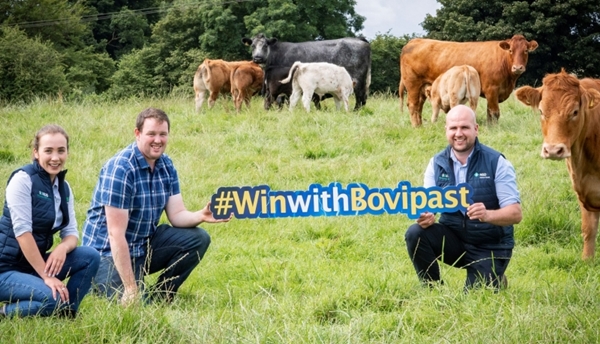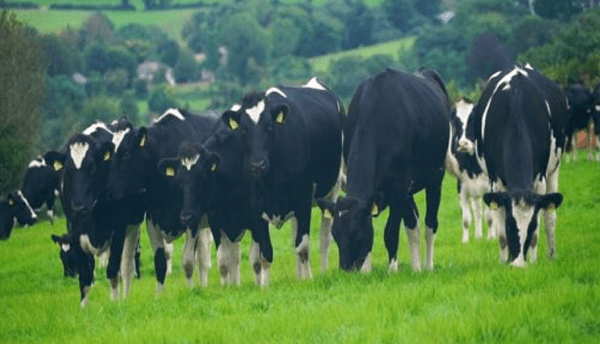

NEWS
Tackling calf scour – Time to think vaccination
9th December 2022
TAGS
The newborn calf will face many infectious diseases in the early stages of life, with calf scour being one of the most common challenges.
Creating a calf health plan now, will help reduce the risk of calf scour occurring in the first place. For Cork dairy farmer, James Murphy, this means making sure colostrum is of the highest quality, in addition to ensuring good environmental hygiene and management on farm.
James highlights the key steps he is taking in preparation for calving 2022 and why vaccination plays such an integral role in his calf health plan to reduce the risk of calf scour occurring on his farm.
Good Colostrum Management – Key to preventing calf scour
Calves are most at risk of calf scour during the first 4 weeks of life; therefore, rely entirely on good high-quality colostrum for protection.
Paul Ryan, Vet Practitioner with Waterside Vets, Co. Limerick, said that “to achieve adequate protection from calf scour, we recommend vaccinating the cow or heifer with the Bovilis Scour Vaccine 12-3 weeks prior to calving.
“This will allow her to increase the concentration of antibodies produced in colostrum antibodies against the main calf scour causing pathogens,” said Paul.
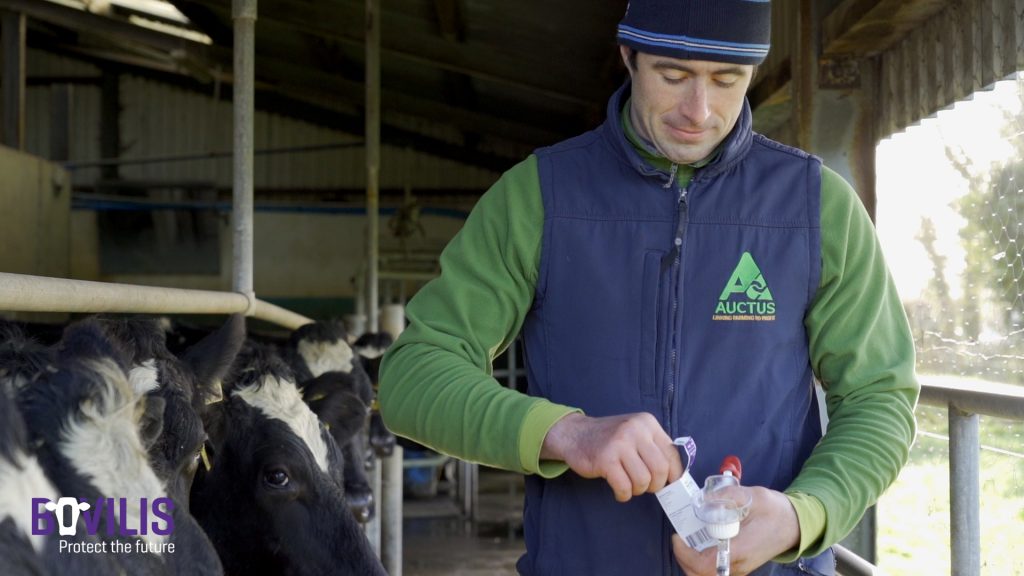
It is critical that the calf receives three litres of good-quality colostrum as soon as possible after birth. The calf should also be fed within the first two hours of birth, to obtain the necessary antibodies which will kick start the calf’s immune system and protect against disease.
According to James, “vaccinating the cows prior to calving gives us an extra boost of confidence going into the calving period as we know the colostrum contains the critical antibodies to reduce the risk of calf scour.
“We place a big emphasis on getting the colostrum right and into the calf as soon as possible after birth. We operate the 1,2,3 rule of colostrum, and use a Brix Refractometer to ensure calves receive high-quality colostrum with a reading greater than 22%.”
Calf health programme to reduce calf scour
The direct cost of treating calf scour can be easily determined from treatment costs and losses, but the overall indirect losses, such as reduced growth rates and labour requirements, are often underestimated.
“We vaccinate against calf scour for two main reasons: Animal welfare and labour. We don’t want the animals getting sick, and from an animal performance point of view, it is important that they reach their target growth rates. Sick calves also add to the workload at an already busy time of year,” explained James.
He continues, “since vaccinating with the Bovilis Scour Vaccine, we have had no sick calves and there is less pressure on the animals as well as the people working on the farm.”
It is important to remember that calf scour vaccination is not a substitute for good hygiene, housing, and environmental factors. Every attempt should be made to keep housing clean and dry, and reduce draughts, where possible.
All feeding equipment should be disinfected after every milk feeding and calf pens should be cleaned out, power washed and disinfected between batches of calves to reduce the build-up of bugs.
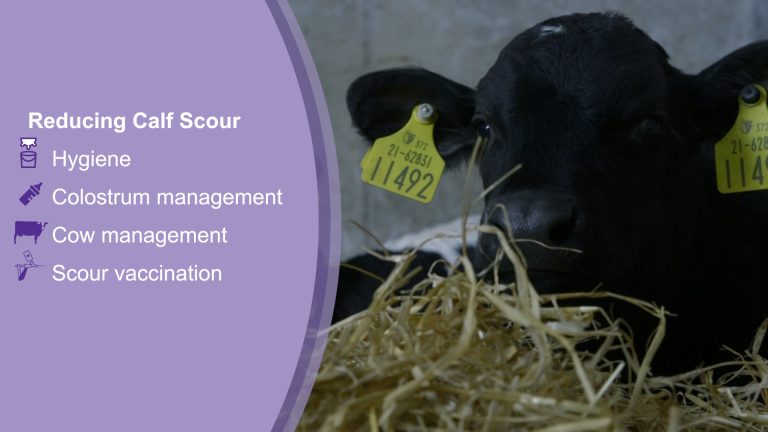
Bovilis Scour Vaccine – At A Glance
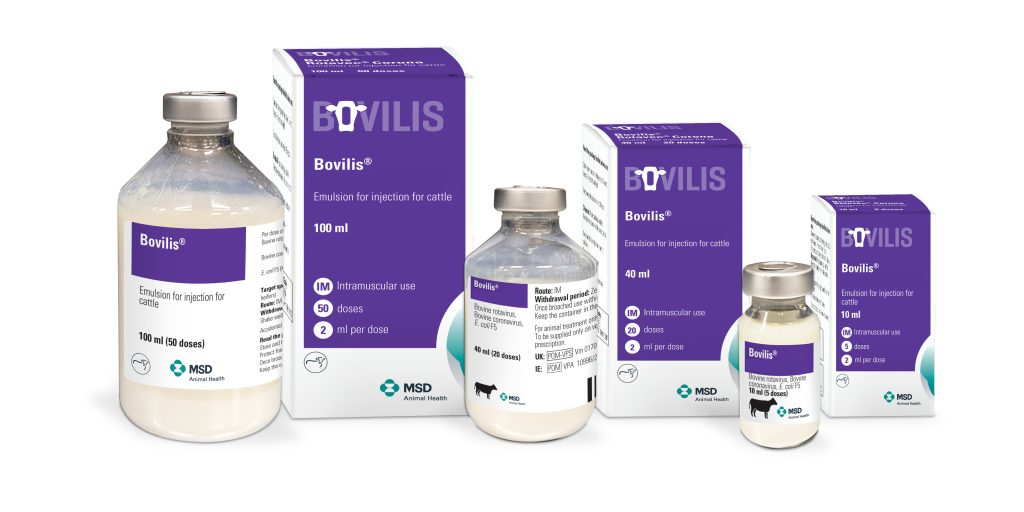
- Single shot primary course.
- Low dose volume (2ml shot).
- Intramuscular administration.
- Broad window of vaccination (Vaccinate pregnant cows 12-3 weeks pre-calving).
- Reduces the severity of diarrhoea caused by E. coli (K99).
- Reduces the incidence of scours caused by rotavirus.
- Reduces the shedding of virus by calves infected with rotavirus and coronavirus.
- Unique 28 day in-use shelf life.
- Reduce the risk of breakage with new PET bottles.
- Available in 5, 20 and now 50 dose packs.
For more information, visit the MSD Animal Health scour page or talk to your vet about the Bovilis Scour Vaccine.
TAGS
Sign up to Bovilis® product and event information
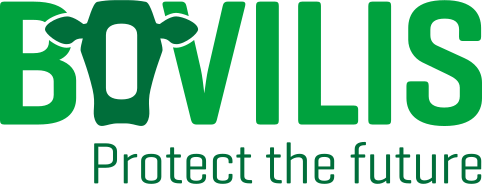
MSD Animal Health
Red Oak North, South County Business Park, Leopardstown,
Dublin 18, Ireland
vet-support.ie@msd.com
PHONE
CATTLE DISEASES
